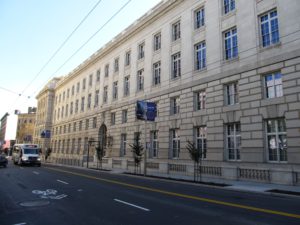For Immediate Release
April 7, 2023
Contacts:
Cyndi Tuell, (520) 272-2454, Western Watersheds Project; cyndi@westernwatersheds.org
Sandy Bahr, (602) 999-5790, Sierra Club; sandy.bahr@sierraclub.org
Robin Silver, (602) 799-3275, Center for Biological Diversity; rsilver@biologicaldiversity.org
Decision Prioritizes Livestock Over Wildlife
TUCSON, Ariz.— Today, the Bureau of Land Management issued final decisions to authorize livestock grazing in the San Pedro Riparian National Conservation Area, once again prioritizing private livestock use over wildlife, clean water, and native plants. According to the conservation groups, these new decisions follow the Bureau’s long history of failing to comply with federal law, including the Bureau’s 2019 management plan that sanctioned destructive levels of livestock grazing on protected lands, putting the area’s remarkable resources at risk.
Despite the abundant scientific evidence demonstrating livestock grazing is fundamentally incompatible with the protection of riparian areas in the arid Southwest, the Bureau has newly authorized grazing on four livestock allotments, essentially sacrificing the irreplaceable values of the Conservation Area for the benefit of four small ranches.
“It’s disgusting, and not just because the Bureau is selling out our precious waterways for political reasons,” said Cyndi Tuell, Arizona and New Mexico Director of Western Watersheds Project. “It’s also just objectively gross to be hiking through cows pies and E.coli-laden streams hoping to catch a glimpse of the rare species that depend on these ‘protected’ habitats.”
A group of 21 scientists sent a letter to the Bureau on May 20, 2018, urging the agency to exclude livestock grazing, noting that if livestock grazing in the San Pedro Riparian NCA were reauthorized, the many aquatic and riparian species and ecosystem functions would be jeopardized and the critically important role of the Conservation Area as an ecological reference site would be lost. The Arizona Department of Environmental Quality has listed these waters as unsafe for bodily contact due to bacterial contamination linked to livestock.
Despite this information, and thousands of other public comments opposing livestock in the Riparian National Conservation Area, the Bureau authorized livestock grazing in a 2019 decision. This decision was challenged in court and a settlement was reached to give the agency a second chance to comply with the law. The decision today is a result of that settlement, but the decision leads conservation groups to conclude the Bureau has once again betrayed the public’s trust.
“It is way past time that the Bureau of Land Management take seriously its responsibility to ‘conserve, protect, and enhance’ the San Pedro Riparian National Conservation Area and its plants, animals, and cultural resources,” said Sandy Bahr, chapter director for Sierra Club’s Grand Canyon (Arizona) Chapter. “Accommodating livestock at the expense of the ecology of the area is contrary to the mandate and to common sense conservation.”
The San Pedro RNCA – the nation’s first riparian National Conservation Area (RNCA)– was created by Congress in 1988 and the Bureau was given a mandate to “Conserve, Protect, and Enhance” the unique values it encompasses. The RNCA includes more than 46 miles of the San Pedro and Babocomari rivers, and nearly 55,000 acres of riparian areas and uplands, including four of the rarest habitat types in the Southwest (cottonwood/willow forests, marshlands, grasslands, and mesquite bosques). More than 400 birds, 50 species of reptiles and amphibians, and 80 species of mammals are found in the RNCA making this area a world-renowned biodiversity hotspot.
“Cows were supposed to be completely removed from this river,” said Robin Silver, cofounder and board member of the Center for Biological Diversity. “With all the other threats the San Pedro River faces – groundwater depletion, climate change, the border wall, you’d think the land manager responsible for protecting it would have done more for the river and not capitulated to the livestock industry.”
The groups also raised concerns that the Bureau’s decision to allow livestock grazing violates the Endangered Species Act. The yellow-billed cuckoo, southwestern willow flycatcher, the northern Mexican gartersnake, Gila topminnow, and the Huachuca water umbel all call the San Pedro Riparian National Conservation Area home. The Huachuca water umbel has been nearly eradicated from the area because of illegal livestock grazing in the Babocomari and San Pedro Rivers that the Bureau has been unable or unwilling to control.
The area is the traditional territory of the Chiricahua Apache, ópata, O’Odham, Hohokam, and Sobaipuri people.
###






